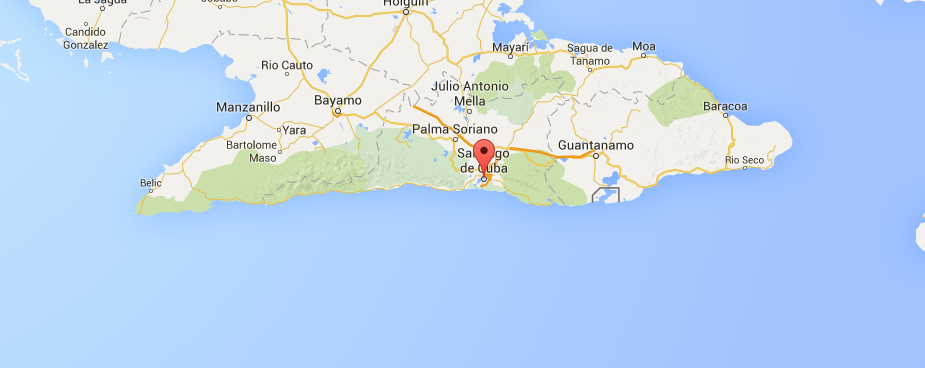Santiago de Cuba!
Santiago de Cuba is the capital of Cuba's southeastern Santiago de Cuba Province, facing a bay off the Caribbean Sea. Founded by the Spanish in 1515, it's known for colonial architecture and revolutionary history. The city's distinctive Afro-Cuban cultural influences are on display during July's Carnaval, a days-long festival with drum-beating parades featuring colorful costumes and son dancing, a precursor to salsa.

Weather: 28°C, Wind SW at 11 km/h, 62% Humidity
Getting there: 19 h 45 min flight. View flights
Founder: Diego Velázquez de Cuéllar
Population: 431,471 (2012)
Santiago de Cuba was the fifth village founded by Spanish conquistador Diego Velázquez de Cuéllar on July 25, 1515. In 1516 the settlement was destroyed by fire, and was immediately rebuilt. This was the starting point of the expeditions led by Juan de Grijalba and Hernán Cortés to the coasts of Mexico in 1518, and in 1538 by Hernando de Soto's expedition to Florida. The first cathedral was built in the city in 1528. From 1522 until 1589 Santiago was the capital of the Spanish colony of Cuba.
The city was plundered by French forces in 1553, and by British forces under Christopher Myngs in 1662.
The city experienced an influx of French and British immigrants in the late 18th and early 19th centuries, many coming from Haiti after the Haitian slave revolt of 1791. This added to the city's eclectic cultural mix, already rich with Spanish and African culture.
Role in the Cuban Revolution
Santiago was also the home of the revolutionary hero, Frank País. On July 26, 1953, the Cuban Revolution began with an ill-prepared armed attack on the Moncada Barracks by a small contingent of rebels led by Fidel Castro. Shortly after this disastrous incident, País began talking with students and young working people informally, drawing around him what became an extremely effective urban revolutionary alliance. This developed into highly organized cells coordinating a large scale urban resistance that became instrumental in the success of the Cuban Revolution.[8]
País' group prepared carefully, accruing weapons, collecting money, collecting medical supplies. They published a cheap newsletter that reported news that criticized the government, attempting to counter Batista's censorship.[9]
In the summer of 1955, País' organization merged with Castro's July 26 Movement. País became the leader of the new organization in Oriente province, though two years later he was betrayed to the police and was shot after his capture.
On January 1, 1959, Fidel Castro proclaimed the victory of the Cuban Revolution from a balcony on Santiago de Cuba's city hall.
https://proximitycuba.com/santiago-de-cuba#sigFreeId200032f300

